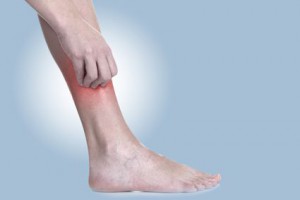What is Restless Legs Syndrome?

Restless legs syndrome is a chronic sensorimotor disorder. It is characterised by an urge to move the limbs (usually the legs) accompanied by unpleasant sensations. These sensations are often difficult for the patient to describe accurately and descriptors might include:-
- Itchy
- Tingly
- Burning
- Crawly (like insects or worms, not on the skin but in deeper tissues)
- Fizzing sensations
- Throbbing
For up to 1/3 of people these sensations may be painful. The commonest site is below the knees and movement may partially or fully relive the sensation. Women are likely to be affected more than men (approximate 2:1 ratio) and there is a family history of restless legs in more than 50% of cases. It affects between 2-3% of adults of any age. It is more common over the age of 40 although many sufferers report experiencing their first symptoms before the age of 20.
The typical pattern of restless legs syndrome is an insidious onset with a gradual worsening of symptoms (more typical of an onset before the age of 45). Other people may experience fairly rapid symptom development but with variable progression (more typical of an onset after the age of 45). Periods of remission can occur, in one primary care based study, conducted over 15 years, it was found that 8% of those studied experienced complete remission and a further 15% had diminishing symptoms. In 41% symptoms remained stable but 36% reported worsening symptoms. For people with restless legs due to an underlying condition or medication (secondary restless legs syndrome), treatment of the condition or withdrawal of the medication may lead to resolution of the symptoms.
Restless legs may lead to other conditions, the most common of which is sleep disturbance. Although it is not one of the essential diagnostic criteria, it is often the prominent “additional” symptom. The pattern of sleep disturbance may be different from patient to patient and may also change with time in the individual. They may experience difficulty in getting off to sleep and may also be woken by the condition. It is often the reason a person chooses to consult about their restless legs syndrome. Chronic sleep deprivation may lead to daytime tiredness and interfere with the ability to function properly. Anxiety and depression prevalence is higher in people with restless legs than the general population. Quality of life measures for people with restless legs are comparable with other chronic medical conditions (e.g. diabetes).
Restless legs is a diagnosis based on a symptom complex. The International Restless Legs Syndrome Study Group produced consensus guidelines for the diagnosis of Restless Legs. These criteria reflect the mixed sensorimotor nature of the condition and recognise that the impact on peoples’ lives varies from mild to severe.

